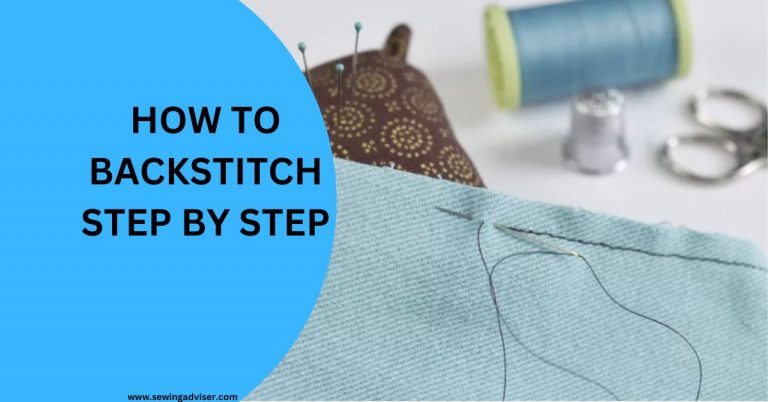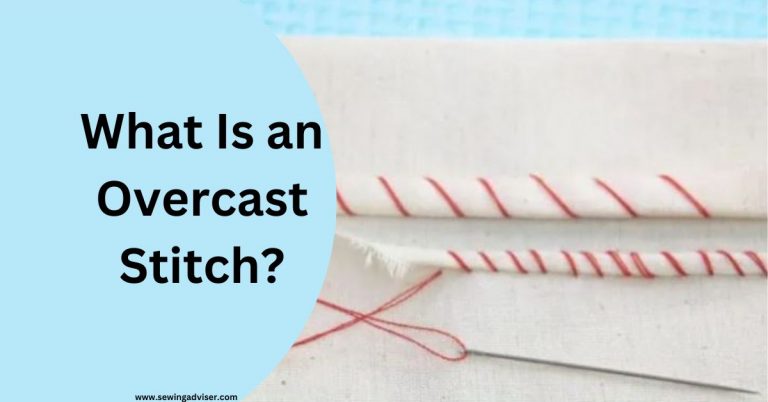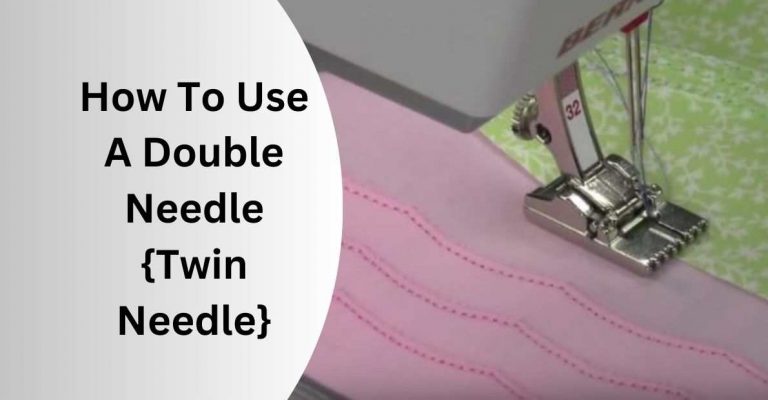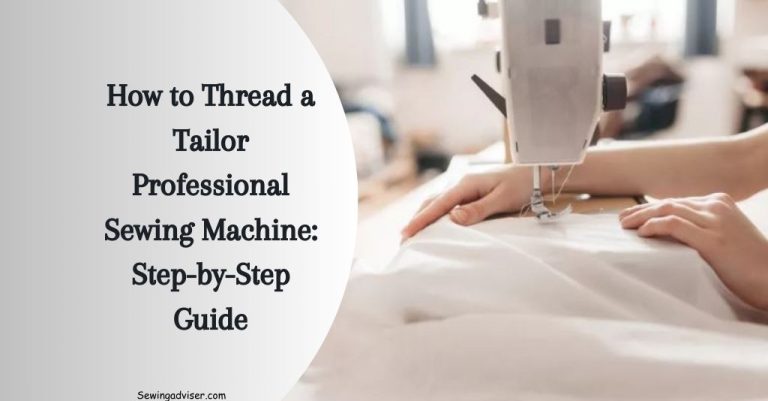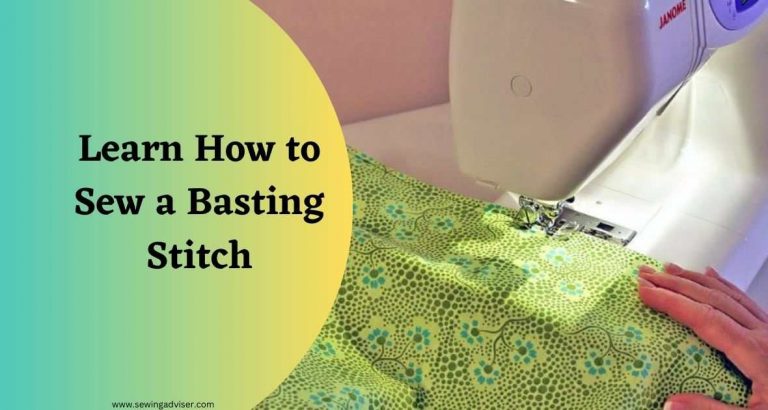What Skills Should Intermediate Sewers Have? 2024 Guide
Do you ever find yourself wondering what it takes to elevate your sewing game from beginner to intermediate level with sewers, knits, woven fabrics, and threading?
Whether you’re a hobbyist or aspiring student, honing specific skills through a course is crucial. As an intermediate sewer, mastering advanced stitching techniques, understanding pattern alterations, and confidently working with different fabrics and knits are essential.
It’s not just about following instructions; it’s about unleashing your creativity and problem-solving abilities through fabric manipulation, including woven fabrics and knits.
So, how do sewers know if they’ve reached the intermediate level in sewing? Well, that’s precisely what we’ll delve into.
From perfecting intricate details to expanding your repertoire of garment construction methods, sewers, and students we’ve got all the insights for taking your sewing skills up a notch. Let’s explore what skills should intermediate sewers have.
Evaluating Your Sewing Skill Level

Assessing Your Current Skills
It’s crucial to take a step back and honestly assess where you stand in the sewers. Look at the various techniques you’ve mastered, such as straight stitching, creating seams, and adding zippers.
Consider how comfortable you are with following patterns and instructions accurately. If you find that you excel in these areas, then transitioning to an intermediate level might be the next best step for you.
On the other hand, if some specific techniques or skills still pose a challenge for you, it’s essential to acknowledge them so that improvement can begin.
For instance, if working with stretchy fabrics or installing buttonholes is still daunting for you, these could be areas needing more attention before advancing to an intermediate level.
It’s also important to recognize your progress from beginner levels having completed projects like simple garments or basic home decoration items indicates growth in your skills. This self-assessment will help pinpoint which aspects of sewing need further development before moving on.
Identifying Areas of Improvement
As an intermediate sewist-to-be, understanding where your strengths lie is just as critical as recognizing where improvements are needed. Identifying both sides of the spectrum what you’re good at versus what needs work helps create a roadmap for focused learning.
For example: You might realize that while hand-sewing intricate details onto garments comes naturally to you (a strength), using sergers or overlock machines remains uncharted territory (an area for improvement). These realizations guide your focus toward mastering new techniques while continuing to refine existing ones.
Furthermore, evaluating how well you follow patterns provides insight into whether advanced projects can be tackled confidently. If interpreting complex instructions has become second nature during previous projects like tailored clothing or quilted items (a strength), this signals readiness for more challenging endeavors ahead.
Read Also: Top 10 Best Sewing Machines For Intermediate Sewers In 2024
Mastering Different Stitches and Their Applications
Learning Various Stitches
Mastering different stitches is crucial for intermediate sewers. You should learn a variety of stitches, including the straight stitch, zigzag stitch, and decorative stitches. Each of these serves a specific purpose in sewing projects. For instance, the straight stitch is ideal for basic seams, while the zigzag stitch helps prevent fraying on fabric edges.
Understanding how to execute each type of stitch will enhance your sewing repertoire. By familiarizing yourself with various stitching techniques, you can elevate your sewing skills and tackle more complex projects confidently.
Applying Stitches in Projects
As an intermediate sewer, understanding the application of each stitch in different sewing projects is essential. For example, when working on garments or home decoration items, knowing which stitch to use for hemming versus topstitching can make a significant difference in the outcome.
By recognizing how to apply specific stitches effectively, you can ensure that your finished pieces are not only visually appealing but also durable and functional.
Achieving Professional Results
Practice makes perfect! As an intermediate sewer, dedicating time to practicing stitching techniques will help you achieve neat and professional-looking results consistently.
Whether it’s honing your ability to maintain even seam allowances or mastering intricate decorative stitches for embellishments, regular practice is key to refining your skills.
Through consistent practice sessions where you experiment with different fabrics and thread types, you’ll gain confidence in handling diverse materials and achieving polished outcomes across various sewing projects.
Understanding Fabric Types and Selection

Familiarize Yourself
Understanding different fabric types like cotton, silk, and polyester is crucial. By familiarizing yourself with these woven fabrics, you’ll be better equipped to choose the right material for your projects.
For instance, if you’re working on a delicate ’30s garden party dress, opting for silk chiffon can make the project more challenging due to its delicate nature.
Learning about various textile materials allows you to make informed decisions when selecting fabrics for your sewing endeavors.
For example, knowing that cotton is durable and easy to work with makes it suitable for creating everyday garments or home decoration items. Conversely, understanding that silk is luxurious but delicate helps you decide whether it’s appropriate for a specific project.
Characteristics Matter
Understanding the characteristics of different fabrics is essential as an intermediate sewer. This knowledge enables you to predict how a fabric will behave during cutting, pinning, sewing, and wearing.
For instance, recognizing that polyester has good durability and wrinkle resistance means it might be ideal for crafting travel-friendly clothing pieces or accessories.
Moreover, being aware of how certain fabrics drape or hold their shape can guide your decision-making process when choosing materials for specific garments.
If you’re aiming to create a structured outfit such as a blazer or tailored pantsuit jacket using woven wool fabric with excellent draping properties would be beneficial.
Enhancing Cutting and Measuring Techniques
Sharpening Your Tools
Using sharp scissors or rotary cutters is essential. Dull blades can lead to jagged edges, making it harder to sew precise seams. By keeping your tools sharp, you’ll ensure clean cuts that make sewing more manageable. For instance, when working with delicate fabrics like silk or chiffon, a blunt blade can cause fraying and uneven edges.
Another way to enhance your cutting technique is by investing in high-quality scissors with comfortable handles. This will help reduce hand fatigue during long sewing sessions and provide better control for intricate cuts.
Mastering Accurate Measurements
To master accurate measuring techniques, start by familiarizing yourself with body dimensions and how they relate to patterns.
Understanding the key measurements for garments such as inseam length, waist circumference, and hip width will allow you to adjust patterns according to individual body features.
Using a tape measure or ruler correctly is also crucial for precise measurements. Make sure the measuring tool lies flat against the fabric without any twists or bends that could skew the measurements.
When marking fabric for cutting and sewing, following all pattern markings and instructions becomes vital. These markings guide you on where to place darts, pockets, buttons, and other design elements accurately on the fabric pieces before stitching them together.
Perfecting Zipper and Buttonhole Insertions
Mastering Zippers
It’s essential to practice inserting them smoothly into garments or accessories. You can start by familiarizing yourself with different zipper insertion techniques, such as centered, lapped, or invisible zippers.
Each method requires precision and attention to detail. For instance, when sewing an invisible zipper, you need to ensure that the teeth are perfectly aligned with the seam for a seamless finish.
To secure zippers in place effectively, consider reinforcing the stitching at both ends of the zipper tape. This extra step prevents the zipper from coming loose after repeated use. Mastering backstitching at the beginning and end of each seam where a zipper is inserted will provide added security.
Perfecting Buttonholes
Learning various methods for creating buttonholes is another crucial skill for intermediate sewers. Whether you opt for machine-sewn or hand-sewn buttonholes, understanding how to execute each technique flawlessly is vital.
When using a sewing machine for buttonhole creation, adjusting stitch width and length according to fabric thickness is key to achieving neat results.
For hand-sewn buttonholes, practicing precise stitch placement ensures durability and aesthetic appeal. It’s also important to reinforce the edges of your buttonholes with interfacing or stabilizer material to prevent fraying over time.
Securing Techniques
After mastering these skills individually, it’s essential to focus on securing both zippers and buttonholes firmly in place within your projects. This involves ensuring that all stitches are secure by backstitching at both ends of seams containing zippers or around buttonholes. In addition:
- Using tailor’s tacks can help mark precise points where buttons should be placed before cutting into fabric.
- Seam sealants like Fray Check can be utilized on raw edges near zippers and buttonholes for added reinforcement against fraying. By honing these skills further through consistent practice and experimentation with different fabrics and designs, you’ll gradually build confidence in tackling more complex sewing projects while achieving professional-looking finishes.
See Also: How to Cut Sleeves off Shirt at Home Easily
Exploring Advanced Sewing Techniques
Learning Advanced Techniques
Now that you’ve mastered zipper and buttonhole insertions, it’s time to expand your skills further. Start by delving into advanced techniques like pleating or gathering. These techniques add intricate details to your sewing projects, giving them a professional touch.
For example, when creating a gathered skirt or dress, learning how to gather fabric evenly and neatly is crucial for achieving a polished look. Similarly, understanding the art of pleating can elevate the design of garments such as skirts or blouses.
Experimenting with Various Techniques
To enhance your expertise as an intermediate sewer, consider experimenting with techniques such as appliqué, quilting, or embroidery. Appliqué involves attaching pieces of fabric onto a larger piece to create decorative designs. This technique allows you to personalize and embellish your creations in unique ways.
Similarly, quilting adds texture and dimension to projects like blankets or table runners. It involves stitching multiple layers of fabric together in intricate patterns. As for embroidery, it opens up endless possibilities for adding detailed designs and motifs to garments and accessories.
Challenging Yourself with Complex Projects
As you continue on your sewing journey, challenge yourself with complex projects that push the boundaries of your skills. Tackling intricate garment patterns or elaborate home decoration items will help you further develop your expertise as an intermediate sewer.
For instance, creating a tailored jacket with lining demands precision in cutting and assembling various pattern pieces while ensuring proper fit and finish. Similarly, crafting decorative pillow covers featuring advanced techniques like piping or ruffles can sharpen your understanding of design elements and construction methods.
Tips for Improving Precision and Speed
Using Pins or Clips
When sewing, use pins or clips to hold fabric layers together. This helps ensure that the pieces stay aligned, preventing any shifting during sewing. By securing the layers in place, you can achieve more precise stitching without worrying about misalignment.
See Also: How to Sharpen Sewing Pins
When working with patterns or intricate designs, using pins or clips allows you to maintain accuracy and symmetry throughout your project. For instance, if you’re creating a garment with multiple pattern pieces, pinning them together before sewing ensures that they match perfectly when stitched.
Moreover, when quilting or working on projects with multiple layers of fabric such as bags or accessories, using clips instead of pins can be beneficial. Unlike traditional straight pins which may get in the way when dealing with thick materials, clips provide a hassle-free alternative for holding everything in place securely.
Practicing Straight Lines
To improve your precision as an intermediate sewer, practice sewing straight lines by aligning fabric edges with seam guides on your machine. This simple yet effective technique helps you sew accurate seams consistently.
By getting into the habit of following these seam guides while stitching straight lines, you’ll notice a significant improvement in the neatness and uniformity of your work.
Whether it’s for constructing garments like skirts and pants or creating home decoration items such as curtains and tablecloths sewing straight lines is a fundamental skill that enhances the overall quality of your projects.
For example: When making a basic tote bag from scratch, ensuring perfectly aligned seams is crucial for achieving clean edges and professional-looking finishes.
By practicing this skill regularly on simpler projects like tote bags or pillowcases before moving on to more complex ones, you’ll build confidence in handling various fabrics and mastering different techniques effectively.
Increasing Sewing Speed
As an intermediate sewer looking to enhance your efficiency, increase your sewing speed by maintaining a consistent rhythm while avoiding unnecessary stops. This not only saves time but also improves productivity during each session at the machine.
One helpful tip is to focus on controlling the foot pedal smoothly rather than constantly starting and stopping abruptly throughout your sewing process. You’ll find that maintaining an even pace prevents uneven stitches caused by sudden changes in speed.
Additionally, this approach minimizes errors due to abrupt movements resulting in smoother, sleeker seams across all types of projects be it clothing, homeware items, and other crafts.
Another way to boost speed is by organizing tasks within each project efficiently. For instance, beginning a quick pre-planning phase where you lay out all necessary tools, patterns, and supplies will help streamline production.
By doing so, you reduce interruptions caused by searching for misplaced items mid-sewing sessions, making progress faster overall.
Expanding Your Sewing Project Repertoire
Explore Different Types
You should explore different types of projects. Try making garments, home decoration items, or accessories. This will help you gain experience in various areas of sewing and broaden your knowledge. For instance, if you’ve been focusing on making garments like skirts and tops, try venturing into creating throw pillows or tote bags for a change.
Dabbling in diverse projects allows you to understand the unique requirements of each type. It also helps you discover which area of sewing resonates with you the most. By exploring different types of projects, you can identify where your strengths lie and what kind of sewing projects bring out your creativity.
For example:
- If you have mainly been making garments, consider trying to sew curtains or table runners.
- Experiment with small accessory items such as headbands or scrunchies if you usually work on larger pieces like dresses or jackets.
Embrace New Techniques
As an intermediate sewer, it’s crucial to challenge yourself by embracing new techniques and designs in your sewing projects. Consider taking on more complex patterns that incorporate intricate details such as pleats, ruffles, or decorative stitching. By doing so, you’ll expand your skill set and learn how to tackle challenging aspects of sewing.
Moreover, don’t shy away from experimenting with different fabrics beyond what you’re accustomed to using. Working with various fabrics like silk chiffon for delicate blouses or canvas for sturdy tote bags will enhance your expertise and make you comfortable handling a wide range of materials.
Here are some ideas:
- If zippers seem intimidating to sew in garments, practice by adding them to pouches or small purses first.
- If quilting is unfamiliar territory for you, start by creating simple quilted coasters before moving on to larger quilted blankets.
Build a Diverse Portfolio
To showcase your growth as an intermediate sewer effectively, build a diverse portfolio consisting of completed sewing projects from various categories. Having a well-rounded collection demonstrates not only the breadth but also the depth of your skills in different areas such as clothing construction and home decoration creation.
Your portfolio can include:
- A variety of garments ranging from casual wear like t-shirts to formal attire such as evening gowns.
- Home decoration items like curtains, cushion covers, and placemats showcase different styles and techniques.
- Accessories including handbags, pouches, and scarves highlighting versatility in design and functionality.
Utilizing Resources to Advance Sewing Expertise
Embracing Online Resources
You should take advantage of various online resources. Look for tutorials, blogs, and forums that can help you learn new techniques. These resources can provide step-by-step guidance on advanced stitching methods, pattern alterations, and garment construction. They often offer valuable tips on fabric selection and usage.
Joining online sewing communities or clubs is another excellent way to connect with experienced sewers. By engaging in these platforms, you have the opportunity to gain insights from seasoned individuals who are willing to share their knowledge and experience with you.
This interaction allows you to ask questions, seek advice on specific projects, and even participate in discussions about the latest trends in the sewing world.
Exploring Workshops and Classes
Consider attending workshops or classes offered by local craft stores or community centers as a means of further enhancing your sewing skills. These sessions provide hands-on learning experiences that can significantly contribute to your growth as an intermediate sewer.
You’ll have the chance to interact with instructors who can guide you through complex techniques such as understanding basic pattern markings or following intricate instructions.
Furthermore, participating in workshops enables you to engage directly with different types of fabrics and patterns while receiving immediate feedback from professionals.
This direct involvement helps solidify your understanding of essential concepts like fabric properties and pattern reading comprehension.
In addition to these opportunities for skill development, it’s important for intermediate sewers like yourself to be proficient in setting zips accurately when constructing garments this is a crucial ability that will enhance the quality of your finished projects.
FAQ’s: What Skills Should Intermediate Sewers Have
What are the key skills an intermediate sewer should have?
As an intermediate sewer, you should focus on mastering different stitches and their applications, understanding fabric types and selection, perfecting zipper and buttonhole insertions, enhancing cutting and measuring techniques, and exploring advanced sewing techniques.
How can I improve my precision and speed in sewing?
To enhance your precision and speed in sewing, practice regularly to build muscle memory. Using tools like rotary cutters for precise cutting and investing time in mastering various stitching techniques will significantly improve your efficiency.
What resources can I utilize to advance my sewing expertise?
You can leverage online tutorials, sewing classes or workshops at local craft stores or community centers. Joining sewing forums or groups allows you to learn from others’ experiences. Also, consider investing in books or magazines that provide insights into advanced sewing practices.
What are some advanced sewing techniques worth exploring as an intermediate sewer?
As an intermediate sewer looking to advance your skills, consider delving into couture finishing techniques like hand-sewn hems or French seams. Experimenting with intricate embellishments such as embroidery or lacework can elevate the quality of your projects.
How do I expand my sewing project repertoire as an intermediate level sewer?
Diversify your projects by attempting new garment styles like tailored jackets or dresses with intricate details. You could also explore crafting accessories such as bags or hats to broaden your skill set while challenging yourself creatively.

